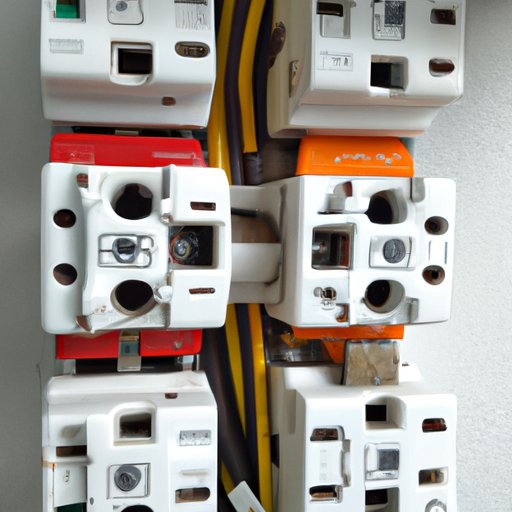Introduction
A circuit breaker is an important part of any electrical system. It is designed to protect the system from damage due to power surges, short circuits, and other potential hazards. Circuit breakers are often installed in residential and commercial buildings to provide protection against electrical fires and other disasters. Unfortunately, when a breaker trips, it can be difficult to determine the cause of the problem. In this article, we will explore why a breaker may suddenly trip and how to reset it.
Exploring Common Causes of Breaker Tripping
There are several common causes of breaker tripping that should be explored when troubleshooting the issue. Faulty wiring is one of the most common causes of breaker tripping. This occurs when the wiring is not up to code or has been damaged over time. Overloaded circuits can also cause a breaker to trip. This happens when too many appliances are running on the same circuit, causing the breaker to become overloaded and shut off the power to prevent further damage.
Short circuits are another common cause of breaker tripping. This occurs when two wires come into contact with each other, causing an excessive amount of electricity to flow through the circuit. Finally, electrical surges can cause a breaker to trip. An electrical surge is an unexpected increase in the electrical current, which can damage the circuit and cause the breaker to trip.

How to Reset a Tripped Circuit Breaker
If you suspect that a breaker has tripped, the first step is to attempt to reset it. To do this, locate the breaker box in your home or office. Open the box and look for the breaker that is labeled as “tripped.” Flip the switch to the “off” position and then back to the “on” position. This should reset the breaker and restore power to the circuit.
Troubleshooting Electrical Outages and Breaker Trips
If resetting the breaker does not restore power to the circuit, it is important to identify the cause of the outage. Start by checking the breaker box for any signs of damage or loose connections. If everything looks fine, check the outlets and switches associated with the circuit to see if they are receiving power. If not, then the problem is likely related to the wiring or circuit itself.
Once the cause of the outage has been identified, take steps to repair the problem. If the issue is related to wiring, it is best to call a professional electrician to handle the repairs. If the issue is related to the circuit, you may be able to fix it yourself by following the instructions in the owner’s manual.

When to Call an Electrician for Breaker Issues
It is always best to call a professional electrician when dealing with any type of electrical issue. While some minor problems can be fixed without professional assistance, it is important to remember that electricity can be dangerous and even deadly if handled improperly. If you are unsure about how to safely handle the issue, it is best to err on the side of caution and call a qualified electrician who can assess the situation and make necessary repairs.

Preventing Future Breaker Tripping Through Regular Maintenance
The best way to prevent breaker tripping is to perform regular maintenance on your electrical system. This includes inspecting the wiring and circuit breakers for signs of damage, replacing worn parts, and ensuring that all outlets, switches, and lights are in good working order. Additionally, it is important to keep an eye on the wattage of the devices connected to the circuit, as too much power can overload the breaker and cause it to trip.
Tips for Identifying and Fixing Breakers That Trip Too Often
If a breaker trips too often, it could indicate an underlying issue that needs to be addressed. First, inspect the wiring and circuit breakers for any loose connections or signs of damage. Then, check the wattage of the devices connected to the circuit and make sure that they are not exceeding the capacity of the breaker. Finally, if the issue persists, it may be necessary to install additional circuit breakers or upgrade the electrical system.
Conclusion
In conclusion, circuit breakers are essential components of any electrical system. When a breaker trips, it is important to identify the cause of the problem and take steps to fix it. Common causes include faulty wiring, overloaded circuits, short circuits, and electrical surges. If the issue persists, it is best to call a professional electrician for assistance. Taking steps to regularly maintain the system can help to reduce the risk of future breaker tripping.
(Note: Is this article not meeting your expectations? Do you have knowledge or insights to share? Unlock new opportunities and expand your reach by joining our authors team. Click Registration to join us and share your expertise with our readers.)
